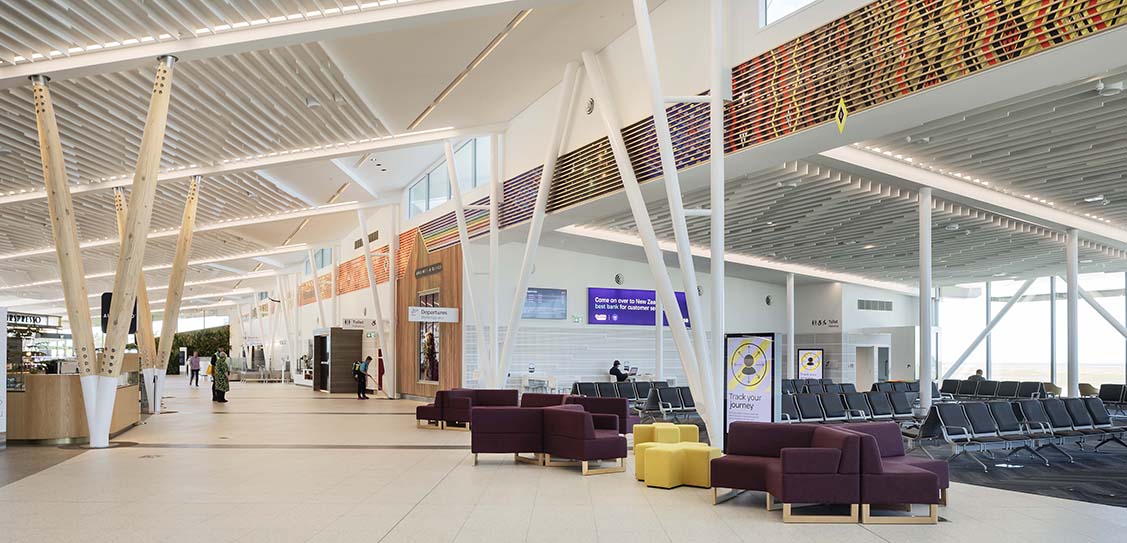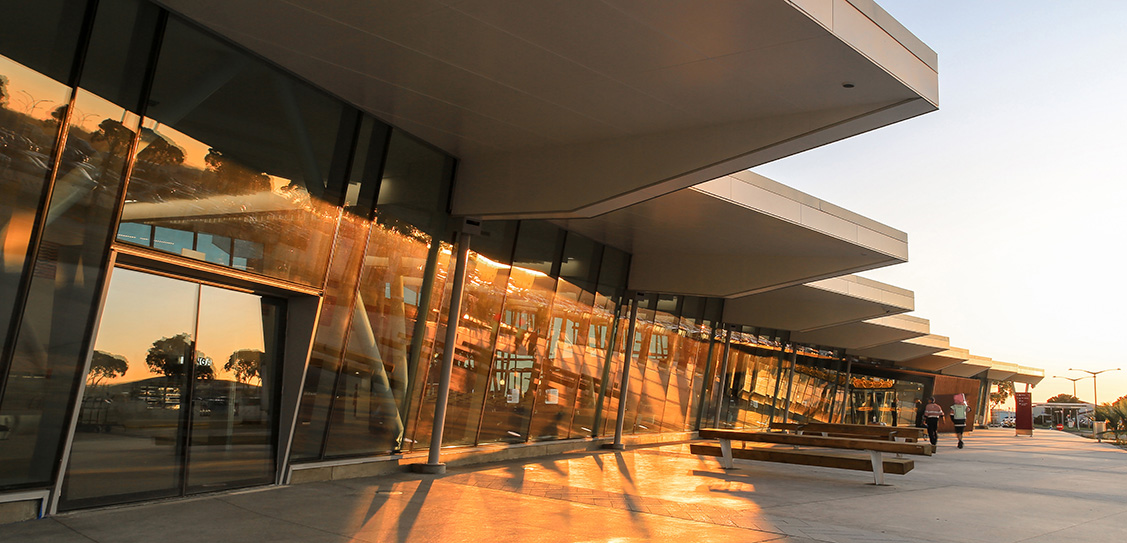Te Hono meaning ‘to connect,’ is located on ancestral land confiscated from iwi in the 1960s. Some 60 years later, the architecture of the terminal puts mana whenua at its heart. Integrating members of local hapū Puketapu into the design team was crucial to this process.
The aim was to represent important ancestral; stories in the fabric of the building.
We wanted to create a place that resonated profoundly with its cultural context, and eschewed superficial adornment.
Campbell Craig, Associate, BecaThe roofline of the terminal is inspired by the creation narrative of Te Ātiawa iwi. One form appears to step up from a landscaped mound to meet the second descending room form. Their symbolic and literal joining is materialised along the length of the public concourse by a brightly coloured tukutuku panel.
The roof form was developed from numerous sketches by the design team, highlighting the radial formation and fractal patterning of the feathers on a bird’s wing. This was a deliberate attempt to contrast the strength of parallel design drivers, which Rangi explained have no meaning in Māori design.
Campbell Craig, Associate, BecaManaakitanga, the Māori concept of hospitality, underpins practical aspects of the design.
While many users of the terminal and its grounds may not at first pick up on the built aspects and their relevance to the cultural context, it is easy to be drawn to the artwork. A 70m tututuku work is a bold backdrop to operations, hospitality and retail. Rongo-ue-roa is represented in the scarlet hues of the local hebe that is endemic to the site and to Tamarau. The celestial being of Rongo-ue-roa is depicted in vibrant yellow. The stitches of the tukutuku, represented by crosses and plus signs, feature throughout the building. The stitches also speak to the ongoing regenerative relationship between Puketapu hapū, Papa Rererangi I Puketapu (New Plymouth Airport Company) and the New Plymouth District Council.
Rangi Kipa is proud that the airport has been recognised for a global award like the Prix Versailles, but the local achievement is far greater: “For the most part, we have been invisible in our own landscape for 160 years, so it’s amazing to have the chance to influence, and give life to, some of the things that make us who we are
Rangi Kipa, Cultural Design Lead, Hapū


